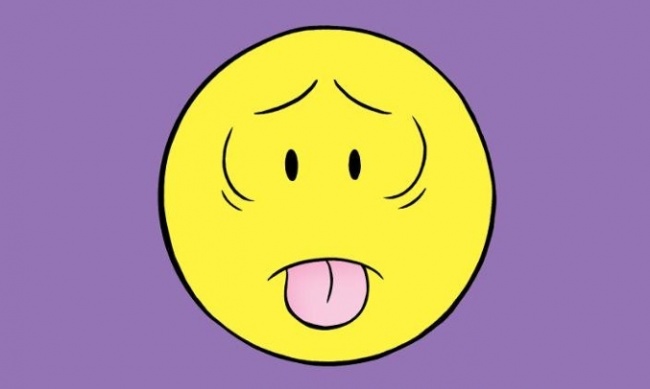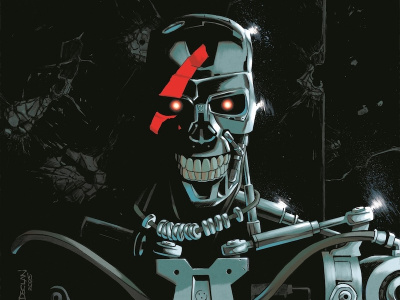We’ve all seen the sales figures of how comics and graphic novels aimed at young readers are the fastest-growing segment of the market. On one hand, this looks like the silver lining for an industry whose core readers have been aging up, where new blood is necessary to keep the business going. The devoted fans of Raina Telgemeier and Dav Pilkey are still prying open their parents’ wallets despite everything (see "It’s ICv2’s Kids Graphic Novel Week"), and will still be there if and when the current crisis ends. Better yet, new young readers are discovering comics every day online, (and in normal times) at book fairs and in libraries.
I think the problem facing retailers, even those who enthusiastically embrace kids, middle grade and YA comics and keep popular titles in stock, is that this audience is fundamentally different from the traditional comic buyer that they have served for decades. Sure, we can sell as many copies of Dog Man and Babysitters Club as kids can cram onto their shelves, but how do we keep those folks coming back into the store for the kind of serialized, connected storytelling that turned previous generations from customers into lifelong fans? Is that something we should hope for, or is there an alternative that could end up just as good from the business side?
Building the next Wednesday Warriors. The publishers of popular kids books are interested in developing long-lasting properties, of course, but they’re not as ambitious as Stan Lee, Jim Shooter or the other architects of superhero continuity in terms of cross-promoting an entire universe, and enticing readers to pick up armloads of new comics every week: the model that built the direct market and sustained it for 40 years. Instead, they are satisfied with merely selling millions of copies of the latest book, then moving on to the next one.
Meanwhile, the people who are (or at least were) good at the serialized side of the business have only recently deigned to notice the young reader market. They haven’t quite figured out how to connect it to their legacy business, or if such a thing is worth doing.
DC has a very good young readers program, with titles like Superhero Girls, Superman Smashes the Klan and Swamp Kid already garnering attention, and a slate of new books featuring Wonder Woman, Batman, Zatanna, and many others scheduled for this year and next. Those books do a good job introducing kids to the popular characters, which certainly helps keep the properties relevant to young fans enticed by movies and animation.
Because these books (wisely) steer clear of DC Universe continuity, they don’t provide a bridge between the very nice onramp DC has now built and its mainstream superhighway of titles that keep habitual (older) readers coming back. Maybe a few readers of Harley Quinn: Breaking Glass will move over to the monthly Harley Quinn DC comic, but if they do, it will be purely by osmosis, not deliberate design.
Marvel has a different strategy. It is possible to buy kid-oriented periodicals featuring Marvel’s top characters, but you don’t buy them from Marvel. They’re licensed to IDW Publishing, who is apparently doing a fine job with them and the companion kids’ Star Wars books. Then, once kids age up, Marvel has a bunch of titles that are "continuity-light" for inexperienced readers, like Ms Marvel, Devil Dinosaur and Moon Girl, and Squirrel Girl. These not only provide a fun introduction to Marvel-style storytelling, they also introduce readers to creators and characters they can follow into other books when they are ready.
Marvel’s problem is that this inclusive strategy has met with baffling pockets of resistance from retrograde fans who see the more lighthearted books and reimagined characters as an affront to old-fashioned storytelling. This is a stupid problem to fit our stupid times, but there you go.
I use these examples because DC and Marvel are the main model, maybe the only model, that some retailers are familiar with. If you can turn a certain portion of young fans into Big Two superhero readers just like their parents (and, increasingly, grandparents), that solves a problem without too much disruptive change. However, the jury is still out on whether DC and Marvel’s efforts will pay off, end up being too-little, too-late, or simply be irrelevant to an audience whose definition of "comics" doesn’t necessarily begin and end with superheroes.
Younger fans are defining a new market. That last bit might be the biggest issue. While DC and Marvel spent decades overserving their dedicated fans with events, crossovers, collector-bait and reboot after reboot, one and a half generations of new comic readers quietly set their own agenda, formed their own tastes, and were trained in a different set of consumer habits.
This isn’t news. We’ve seen a giant shift toward manga and manga-influenced content over the past 15 years, with manga sales growing 120% since 2012 – much faster than the market as a whole. That has an impact beyond the cash register.
If you look at the ecosystem of fan art, user generated content, and Kickstarted indy projects by younger creators, the entire aesthetic is informed by the styles popularized by top-selling manga. That’s now reflected in publisher-imprint books aimed at teens and YA readers, reinforcing the cycle of influence.
In some ways, this mirrors the old fanzine culture of the 1960s and 70s, when young artists developed styles based on the stuff they liked as kids and teens. As they developed into professionals, we saw a surfeit of work reflecting the influence of favored artists like Frank Frazetta and Neal Adams, and story structures that elaborated on the more ambitious works of 5-10 years previous.
Today’s world of fandom is much more participative and rooted in amateur creation. Powerful tools to make comics are easy to come by, digital platforms are ubiquitous, and crowdfunding provides a way to monetize fans and content quickly. We can reasonably expect that some of today’s teen or tween fans of Raina Telgemeier or Kazu Kibuishi will start by emulating those creators, contribute content to the UGC sections of webcomics services like Webtoons or Tapas, and take today’s YA styles to a new level once they become professionals in a decade or so.
In the meantime, they are seeking influences wherever they can find them, and reinforcing one another’s tastes on social media all the time. Just look at the career of Noelle Stevenson as an example of how quickly talent can develop, find an audience, make a creative and commercial impact, and propel the creator into a new strata of stardom in this ecosystem.
So will the YA audience stick around? To answer the question posed by the title of this column, I think there are a few possible upside scenarios. The first and easiest from the standpoint of today’s retailers is that DC and Marvel succeed, at least to some extent, in coopting the young reader surge and find ways to convert those fans of kid-teen-YA graphic novels into the next generation of superhero fans, even if the format of "comics" has to change a little bit to accommodate them.
More likely, the young fans of today’s kid-centric graphic novels, influenced greatly by the past decade’s worth of manga, develop into a more unique and distinctive fan culture that uses the popular work of the past few years as the basis for a new generation of creativity.
That means the traditional techniques (or gimmicks) of keeping fans engaged might not work anymore, so purveyors of comics may need to change tactics. But just because newer fans no longer respond to the catnip of continuity and collectability, they can still end up as long-term customers because of their powerful, socially-reinforced connection to comics as community and a creative platform.
The opinions expressed in this column are solely those of the writer, and do not necessarily reflect the views of the editorial staff of ICv2.com.
Rob Salkowitz (@robsalk) is the author of Comic-Con and the Business of Pop Culture.

Column by Rob Salkowitz
Posted by Rob Salkowitz on April 27, 2020 @ 6:49 pm CT
MORE COMICS
'Time Before Time' Co-Writers Reunite for New Series
July 30, 2025
McConville and Shalvey, who co-wrote the time-travel mystery Time Before Time, join forces for the next arc of The Terminator.
Eisner-Winning Manga Inspired Two Films
July 30, 2025
The manga, which won a 2007 Eisner Award, inspired both the 2003 film by Park Chan-wook and the 2013 remake by Spike Lee.
MORE COLUMNS
Column by Scott Thorne
July 28, 2025
This week, columnist Scott Thorne comments on the Edge of Eternities prerelease and on Magic: The Gathering news from the Hasbro earnings report.
Column by Rob Salkowitz
July 21, 2025
Columnist Rob Salkowitz lays out the Comic-Con panels of interest to industry professionals, current and aspiring creatives, educators, librarians and retailers.








